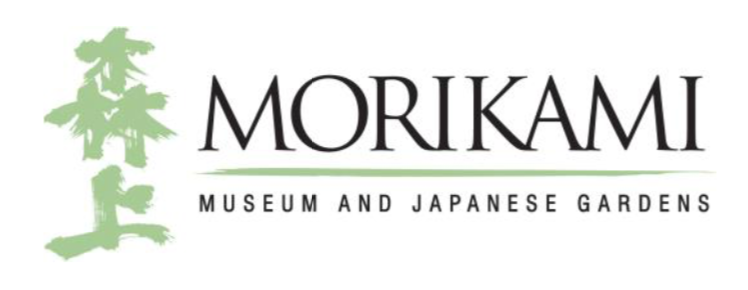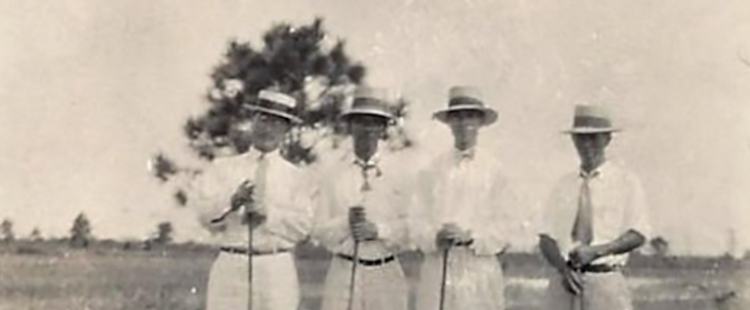
The museum’s photo archives also showcase the recreational pastimes of the Yamato
Colonists who settled in Delray Beach during the early 20th century. Naturally, they
embraced sports that were popular in America – such as baseball and golf. They also brought and shared some Japanese games and activities, including the card
game
hanafuda
and the board game
Go
. According to a 2016 survey by the International
Go Federation, over 46 million people worldwide who know how to play the game with
over 20 million current players.
Sumo
Let the Games Begin!
Morikami Museum and Japanese Gardens
Unveils New Virtual Exhibit
Showcasing Sports and Games of Japan
Delray Beach, FL – Morikami Museum and Japanese Gardens recently added an exciting new online exhibition to its virtual library. Titled “Let the Games Begin,” the exhibit showcases the cross-cultural influence of sports and interactive games found
around the world.
One of the popular sports unique to Japan is sumo. Sumo is closely associated with the indigenous Shintō religion; the sport was introduced during the Yayoi period at the order of
Emperor Suinin (who reportedly reigned for 99 years from 29 B.C.E. to 70 C.E.). Pre- game etiquette in which sumo wrestlers engage in before fighting, such as stamping their feet and throwing salt stem from religious rituals. To win in sumo, wrestlers must push or pull the opponent out of the ring, or forcing them to the mat. Garbed in robes similar to those worn by Shintō priests, sumo referees are highly respected by both participants and fans for their decorum and judgment.
Archery
In Japan, as in many other countries, the horse symbolizes power and wealth as well as a crucial component to success on the battlefield. By the 7th century, mounted archery, called yabusame, had become a necessary marital arts skill, especially in the days before the sword was the weapon of choice for samurai warriors. By the Heian period (794- 1185), archery competitions were included in formal court ceremonies to honor ancestors and request protection for the community from the gods. After the 16th century – when guns were introduced from the West – archery faded as a combat skill, but continues as an aesthetic practice to refine both the body and mind. No longer on horseback, the marital art of kyūdō, or the way of the bow, came to be widely practiced. After WWII, high schools revived it as an extracurricular activity more closely related to archery in the West. However, in Japan the focus remains on self- improvement over scoring and awards.
Kendō
Similarly, another traditional martial art that developed into a modern sport is kendō. During the Shōtoku era (1711-1716), Naganuma Shirozaemon-Kunisato (1688-1767) developed new and more graceful techniques of wielding the sword created from actual battle skills, and shaped the foundation of formal routines, or kata. Later, protective gear and the bamboo-sword (shinai) were established as basic equipment. The playing area is a 33-foot square. Because you can circle your opponent in kendō (unlike Western fencing) there can be a lot of physical contact, and kendō practitioners are allowed to strike a player when they are down.
Kemari
Many traditional Japanese sports and games date back to the classical Heian period (794-1185). One example is the Japanese version of hacky-sack, or kemari. It was an engaging pastime for the elite and commoners alike at the Heian court with anywhere from two to 12 people divided into two teams who try to keep the hide-covered ball in the air as long as possible. The typical court has a dirt floor and one tree at each corner: ideally a cherry, maple, willow, and pine. The contemporary Kemari Preservation Society maintains the courtly traditions associated with the game.
|
Kites Other games and contests invented in the Heian period began to thrive later in the Edo period (1603-1868), such as kite battles. One of the most famous kite events is the Hamamatsu Kite Festival. It dates back to 1558 as a celebration in honor of the local lord’s firstborn son. It is held annually on May 3-5 in the city of Hamamatsu, and features a contest on the beach where teams from over 100 different towns try to bring |
|
down each other’s kites. These massive kites can be more than 11 feet wide and take several people to launch and control them. A smaller version of these fighting kites in the Morikami Museum Collection bears the symbol for the town of Kitamachi. |
Kaiawase
Another favorite Heian pastime was the shell-matching game, or kaiawase, which came into full development by the 12th century. In the early years of the game, one would accumulate a set of shells with scenes painted on them and play with one to four people, usually kneeling on a mat or next to a low table. By the end of the 12th century, the full game set consisted of 360 illustrated clamshells. The matching lacquer boxes for carrying the pieces became more elaborate over the years, too.
Kendama
Another globally beloved game that flourished in the Edo period is the Japanese version of a cup-and-ball game called kendama. Legend states that French sailors brought bilboquet to Japan in the 1700s as a drinking game. The Japanese added two side cups of
different size to make it more challenging and today there are formal competitions held worldwide. Don’t miss the Kendama World Cup hosted by Japan on August 21-22, 2021.
Pachinko
In the early 1900s, a table game introduced by the French called Corinth evolved into Pachinko. A kind of up-right pinball machine and slot machine combined, the name Pachinko derives from the sound the metal balls make. Throughout the 1920s and 1930s, they were primarily enjoyed by kids in candy shops, but gradually were taken over by adults for gambling. While gambling is illegal in Japan, Pachinko parlors circumvent the laws by awarding prizes, not cash; or you can take a prize ticket to a separate shop to exchange it for money. From 1937, production of Pachinko machines stopped as manufacturing shifted to support the war effort. After World War II the gaming industry revived; and today it accounts for more than 4% of Japan’s Gross Domestic Product annually.
Morikami Museum and Japanese Gardens is located at 4000 Morikami Park Road, Delray Beach. For more information, please call (561) 495-0233 or visit morikami.org.
For full Press Release with photos, click HERE

